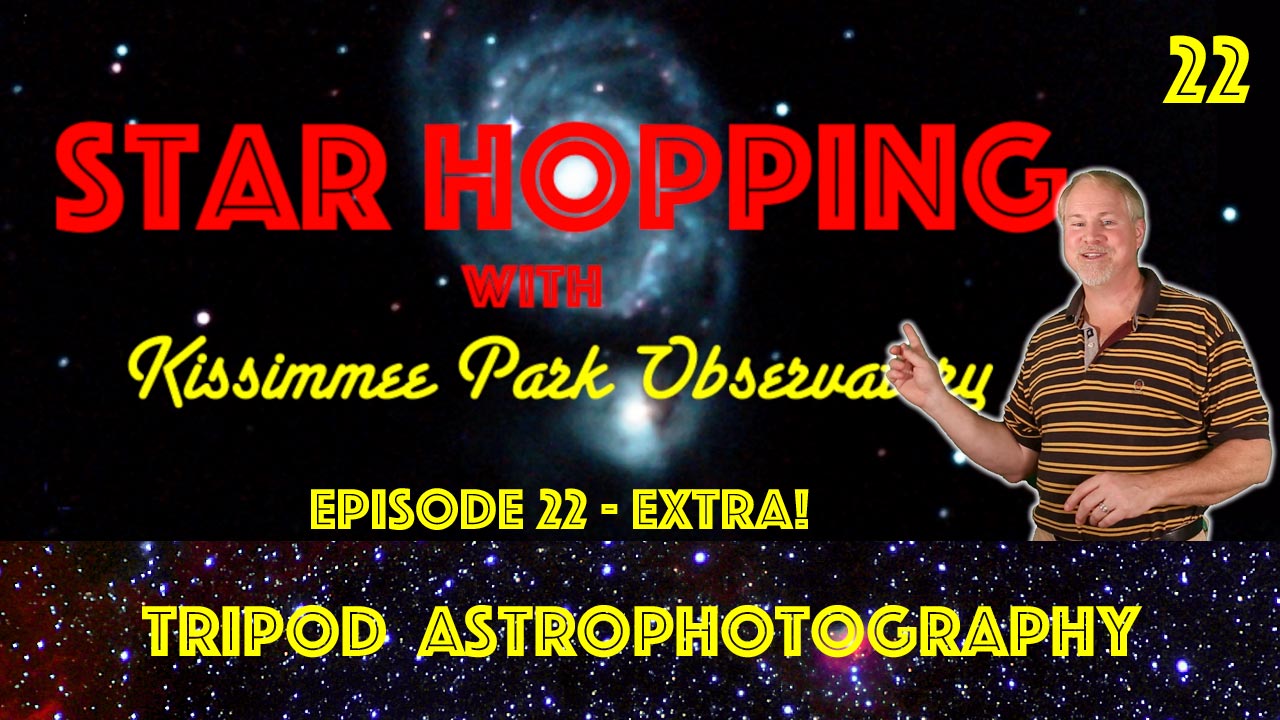In Episode SH022 of Star Hopping…
In this Star Hopping “Extra”, we’ll start a new topic series – Basic Astrophotography. In this episode we’ll talk about the three basic methods in which you can capture astronomical images and targets with your DSLR camera, and give specifics about imaging using a fixed tripod.
We’ll show you how to create polar star trails, time lapse movies, and single starscape shots.
Here are some links to the astrophotography products we discussed in the episode.
- A DSLR Camera (general at Amazon)
- A fairly wide angle lens (general at Amazon)
- An Electronic cable release (general at Amazon)
- An Intervalometer (general at Amazon)
- Nebulosity
- Time Lapse Assembler
- Alpine Labs – Radian (link for Nikon if you use their cams; Amazon doesn’t seem to have Radian with Canon cables. Use the Alpine Labs link to get that product for Canon)
Disclosure: some of the product links above are affiliate links, meaning I get a small commission from the seller if you happen to click through and buy something. It doesn’t cost you any more to use these links, and by using them it would support activities at KPO. So I thank you in advance if you do indeed use these links to make a purchase.
Intro
So this is going to be the first episode to cover a brand new Topic area on Star Hopping – Astrophotography: capturing the night sky with your camera. I have received some requests from a few of you out there to start some basic discussions about the process, procedures, and equipment needed to capture beautiful astronomical images with your camera.
Feeble Eyes
One of the main challenges with visual astronomy, especially with beginners, is that deep sky objects generally appear very different in the eyepiece of the telescope as they do in the pictures they have seen that initially attracted them to the hobby; in the telescope, most objects appear ghostly white and without color. That’s because the sensory cells in our eyes just are not excited enough by the dim levels of light coming from these objects through the eyepiece. Not to say that the photons are dull and boring, it’s just that they are dim!
The Camera Eye Wins
But everything changes when you use a camera and start taking time exposures: setting your camera to open its shutter for much longer than usual, as compared to when you take terrestrial photos or normal snapshots. These pale deep sky objects then appear in vivid colors like reds, pinks, greens, and blues, and are sublime to behold. When you capture your first successful astrophoto and see that color, it is absolutely amazing and you will definitely be hooked.
CLICK >>> Watch this Episode on YouTube!
Let us know your Questions and Comments!
Please feel free to leave a question or comment below, and we will respond as quickly as we can. You can also reach out to Dave on Twitter @StarHoppingMan.
Connect with Star Hopping!
We would love to have you join us on our various social media sites, and subscribe to our newsletter. Visit our Contact page to connect with us!
Credits for this Episode
- None


